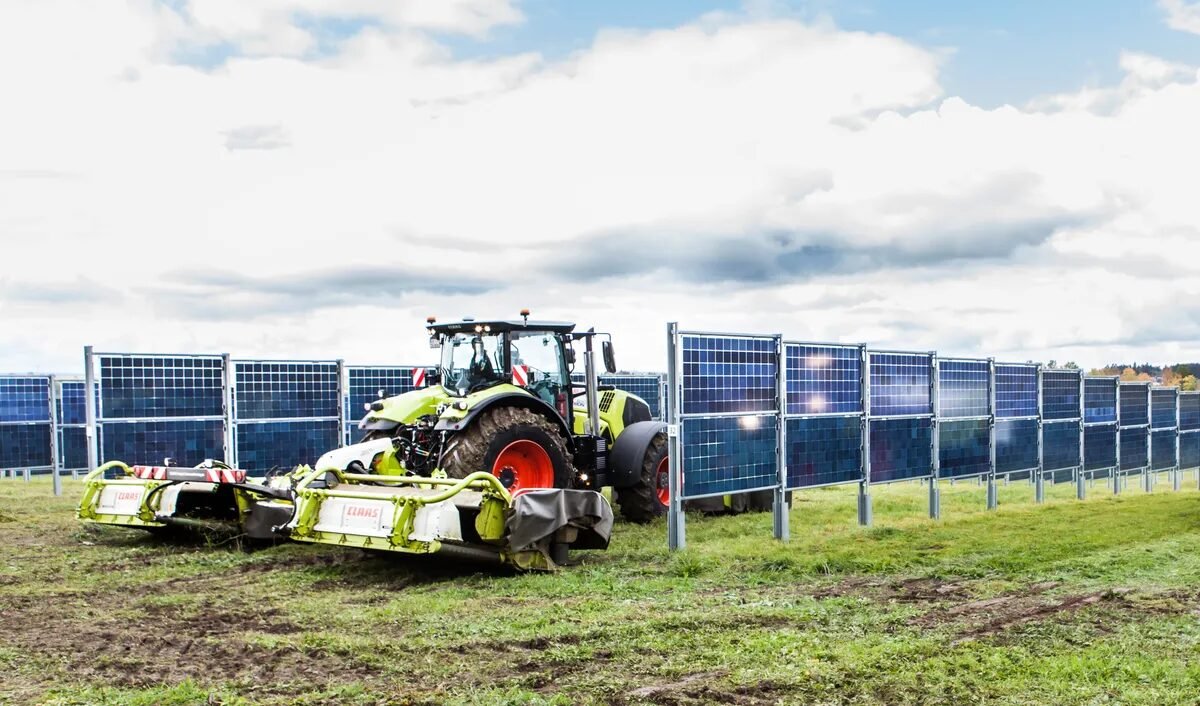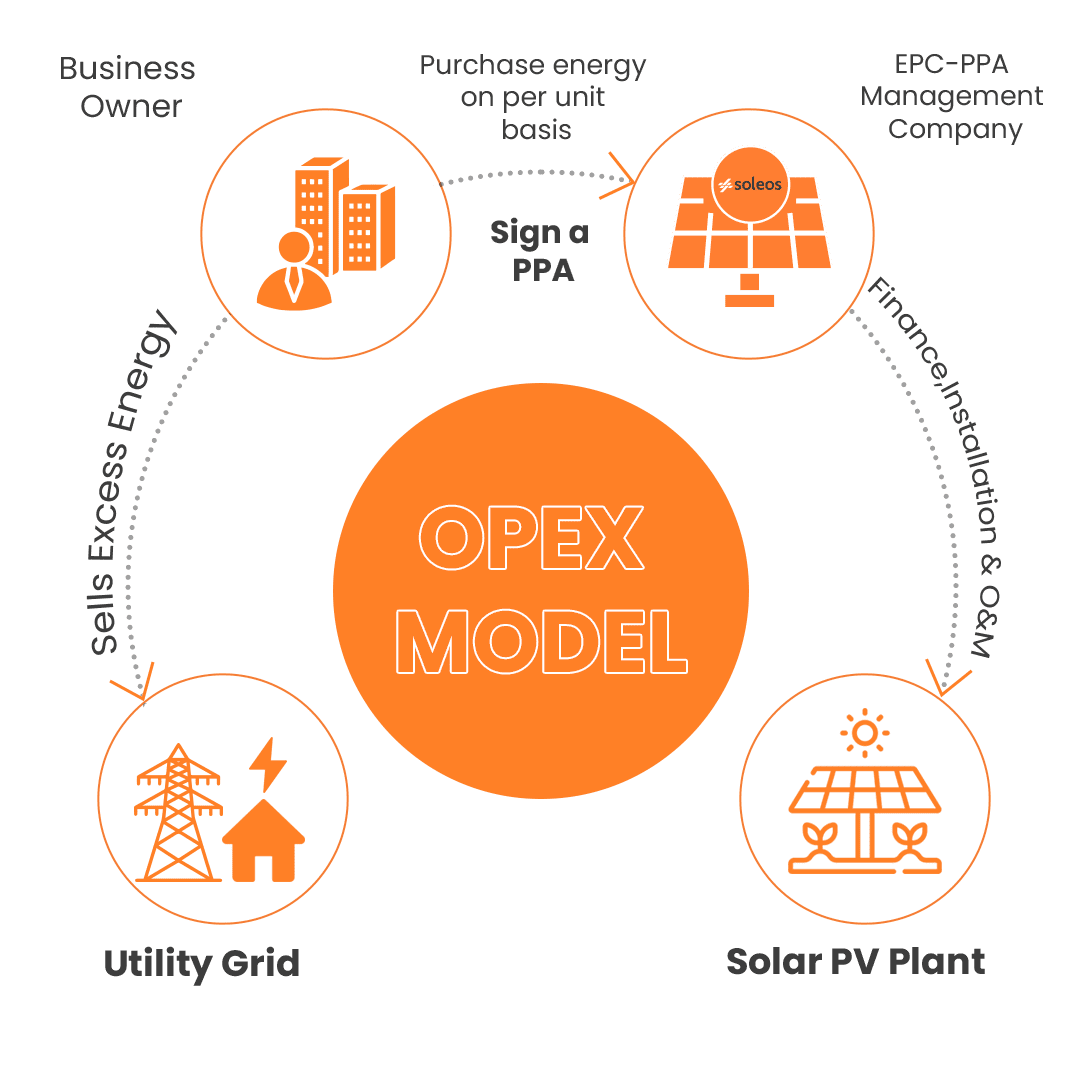India is a country with a huge potential for agrivoltaics, the innovative practice of combining solar energy and agriculture on the same land. Agrivoltaics can help India overcome the dual challenges of meeting its soaring energy needs and supporting its vital farming sector. India has the third highest energy consumption in the world, with a population of over 1.3 billion people. Yet, its per capita energy use is still much lower than the global average, due to its level of development. India relies heavily on fossil fuels, which cause severe air pollution in urban areas. To achieve its climate targets and ensure universal access to electricity, India is committed to increasing its renewable energy sources. Agrivoltaics can offer a sustainable and efficient solution for India’s energy and food security.
On the agricultural front, India supports about 600 million farmers and farm workers. But farm incomes remain low due to small landholding sizes, low productivity, and an overreliance on monsoons for irrigation. Climate change is projected to adversely impact crop yields in the future. With scarce arable land and a growing population, India needs to boost crop productivity without expanding its agricultural footprint. There is tremendous urgency for India to innovate and find solutions that address its energy and food security challenges.
What is Agrivoltaics?
Agrivoltaics, also known as agri-PV, refers to the co-location of agriculture and solar photovoltaic (PV) systems on the same land. It involves growing crops underneath raised solar panels that are mounted high enough off the ground to allow sunlight to reach the plants below.
Agrivoltaics provides numerous benefits, including:
– Making efficient use of land by allowing it to be used for both solar power generation and food production. This is especially useful in areas where land availability is limited.
– Increasing overall productivity of the land. The crops benefit from partial shade, which reduces water evaporation from the soil and plant transpiration. This allows certain crops to grow better.
– Providing additional income to farmers through lease fees for the land use by solar developers. The extra income provides financial stability.
– Reducing soil erosion and pest pressure on crops by providing ground cover and limiting weed growth under the panels.
– Providing shelter from rain and hail damage for delicate crops like berries and grapes by elevating the panels sufficiently.
– Improving power output of solar panels which stay cooler due to reduced ambient temperatures under the panels. This increases efficiency.
– Allowing grazing of sheep and cattle to control weeds and reduce grass cutting costs under raised panels.
So in summary, agrivoltaics enables more productive use of agricultural land by simultaneously producing crops and generating solar energy on the same footprint of land.
Vertical Solar Panels
Vertical solar panels, as the name suggests, are solar panels installed vertically rather than at an angle or horizontally on rooftops. They have emerged as an important technology for agrivoltaics or co-locating solar power generation and agriculture.
Vertical solar panels have the following advantages compared to conventional horizontal photovoltaic panels:
– Higher energy yield: Vertical panels can capture sunlight from sunrise to sunset, generating more energy per square meter than horizontal panels. They work effectively even when the sun is low on the horizon.
– Dual face functionality: Vertical bifacial panels absorb sunlight from both the front and back side. The albedo or reflection from the ground further increases energy generation.
– Better airflow and cooling: The vertical orientation allows hot air to rise and dissipate easily, keeping the panels cooler. This improves their efficiency and lifespan.
– Less soiling: Dust accumulation is lower on vertical panels due to improved airflow and self-cleaning from rainfall. This maintains optimal performance.
– Space efficiency: Vertical solar panels require a smaller footprint and can be installed in tight spaces between crops. Their slender design provides ample spacing and sunlight for agriculture.
– Shade for crops: The panels can provide useful shade from intense midday sun and heat for crops growing underneath. This can improve yields.
The vertical alignment, dual-side light absorption, and reduced soiling make vertical solar panels ideal for high-density solar power generation with the added benefit of enabling continued farming. Their advantages make them a perfect fit for the agrivoltaics model.
Pioneers of Agrivoltaics
Next2Sun is a German startup that is pioneering vertical solar panels for agrivoltaics. This company has developed a special bifacial solar module that is installed vertically and collects sunlight from both sides. This innovative design allows the panels to produce peak power in the morning and evening, unlike horizontal panels that peak at midday.

The vertical alignment also leaves enough space and light for crops to grow underneath or between the panels. Next2Sun has successfully implemented several agrivoltaics projects in Germany, where it has combined its vertical solar panels with crops like potatoes and hay.
Next2Sun is now planning to install its first agrivoltaics project in the United States, in Vermont. This will be done in collaboration with a local farmer to demonstrate the technology’s feasibility and benefits in the US agricultural context. The German startup aims to showcase agrivoltaics as an innovative solution that allows farmers to simultaneously generate solar power and grow crops on the same land.
Agrivoltaics in India
India has also shown interest in agrivoltaics, as it has the potential to address its land and energy challenges. There are already some examples of vertical solar panels and agrivoltaics in India:
– Tata Power Solar and Dell India have built India’s largest vertical solar farm of 120 kW on Dell’s Bengaluru campus. The 45-meter-long structure provides the dual benefit of producing green energy and insulating the building, thus reducing power consumption.
– U-Solar Clean Energy Solutions Pvt. Ltd. has installed India’s largest building integrated vertical solar system of 1 MW on a data center in Mumbai. The system covers the entire facade of the building and generates enough power to meet 25% of its energy demand.
– Gro Solar Energy has installed a 7 MW solar project in Maharashtra, where it has integrated solar panels with drip irrigation for crops like sugarcane and banana. The project has increased the crop yield by 15% and reduced the water consumption by 40%.
– Soleos Solar Energy Pvt. Ltd. is a global EPC company in the solar energy field, known for its innovation and technology. It has a team of experts who deliver high-quality and sustainable solar power plants across various sectors and locations, including Asia’s largest solar carport at Honda Limited in Tapukara, Rajasthan.
Challenges for Agrivoltaics in India
India faces some key challenges that need to be addressed for agrivoltaics to reach its full potential.
Lack of Awareness
There is limited understanding among farmers and policymakers about the concept and benefits of combining solar power and agriculture. Many are unaware that solar panels can be installed vertically and farming can continue underneath. Raising awareness through educational programs, demonstrations, and field visits will be crucial.
Policy Support
Currently there are no policies or incentives focused specifically on promoting agrivoltaics. The government will need to provide subsidies, tax credits, and feed-in tariffs to encourage investment by farmers and developers. New standards and guidelines for agrivoltaic system design and installation also need to be established.
Financing
The high upfront costs of installing solar panels and making structural changes for vertical orientation is a major barrier, especially for smallholder farmers. Making financing more accessible through government funding, loans, and public-private partnerships will help drive adoption. Access to insurance against risks like crop damage is also currently limited.
Overcoming Challenges
To enable the widespread adoption of agrivoltaics in India, the country needs to take steps to overcome existing barriers and create an environment conducive to innovation in this area. Some ways to achieve this include:
Providing Incentives
The government can offer incentives like feed-in tariffs, tax credits, and low-interest loans to encourage farmers and project developers to invest in agrivoltaic systems. This will help offset the relatively high upfront costs and make agrivoltaics more financially viable.
Developing Standards
Relevant agencies and industry bodies can formulate design, installation and operational standards and guidelines for agrivoltaic projects. This will ensure such systems are engineered optimally for factors like panel orientation, crop selection, maintenance etc.
Investing in R&D
Investment is required in research and development to improve efficiency, durability and crop compatibility of agrivoltaic technologies. This includes innovations like transparent/colored solar panels, optimized panel-to-crop ratios, smart sensors etc.
Creating Awareness
It is important to educate farmers and consumers about the benefits and opportunities of agrivoltaics through workshops, exhibitions, field visits etc. This will drive adoption by raising awareness and social acceptance.
Benefits for India
India stands to gain tremendously by adopting vertical solar panels and agrivoltaics. Here are some of the key benefits:
Renewable Energy
– Agrivoltaics can help India meet its ambitious target of installing 175 GW of renewable energy by 2022.
– Solar energy generation and agricultural production happen on the same land, optimizing land usage.
– Solar energy can be fed directly into rural grids, providing clean electricity access in remote areas.
Food Security
– Carefuldesign ensures solar panels do not hinder crop growth. In fact, studies show agrivoltaics can increase yields in hotter climates by providing shade and reducing evaporation.
– More predictable energy access allows farmers to invest in equipment like pumps and cold storage that reduce crop losses.
– Diversified farmer income from solar leasing fees improves economic resilience.
Jobs
– Construction and maintenance of utility-scale agrivoltaic projects creates green jobs, especially in rural areas.
– New skill development opportunities arise in areas like solar technician work tailored to agriculture.
– Increased and diversified agricultural production supports overall growth of agri-business employment.
India’s Potential
India has tremendous potential to become a global leader in agrivoltaics and set an example for other countries to follow. With its abundant sunlight, large agricultural sector, and pressing energy needs, India is an ideal place to scale up vertical solar panels and agrivoltaic systems.
By adopting agrivoltaics on a national scale, India could:
– Meet its ambitious renewable energy goals of 175 GW by 2022, and potentially even exceed them.
– Optimize its land usage by maximizing both agricultural production and clean energy generation per acre.
– Enhance incomes and create new green jobs for farmers through the additional revenue from solar power.
– Increase its energy, water, and food security by boosting crop yields, reducing water usage, and generating solar power locally.
– Mitigate climate change by displacing fossil fuels, enhancing carbon sequestration, and promoting climate resilience.
– Catalyze innovation in solar technology suited for the Indian context, creating valuable intellectual property and exports.
– Serve as a model of sustainable development for other tropical countries with scarce land and high solar insolation.
With the right policies, investments, and political will, India can transition millions of acres into highly productive agrivoltaic systems. This can cement India’s position as a trailblazer in sustainable agriculture and renewable energy integration. Becoming a frontrunner in agrivoltaics can also align with India’s broader goals of Atmanirbhar Bharat, doubling farmer incomes, and meeting its Paris Agreement commitments.
Conclusion
Veritcal solar panels and agrivoltaics offer immense potential for India. By combining solar energy generation and agriculture, this innovative technology can help India achieve its renewable energy targets, enhance food security, save scarce land resources, and increase farmer incomes.
The examples of successful agrivoltaics projects in India demonstrate that this technology can be implemented despite initial barriers like high costs and lack of expertise. With the right incentives and enabling policies from the government, agrivoltaics can be scaled across India.
Research institutions will play a key role in optimizing agrivoltaic systems for the Indian context. They need to develop customized solutions considering factors like crops, climate, soil, etc. Transferring technical know-how to farmers through training and demonstrations will drive adoption.
India is well placed to lead the global agrivoltaics revolution. The sunny climate and massive demand for both energy and food make it an ideal testbed. India can set an example for other developing countries with similar socio-economic conditions.
To fully realize the potential of agrivoltaics, all stakeholders – government, industry, farmers, and consumers – need to come together. The time for siloed thinking is over. Collaborative action will turn this disruptive innovation into mainstream reality.
Contact us today at +91-8320095024 or visit www.soleosenergy.com to learn more about how to choose the best solar business model for your company! Feel free to reach out with any questions or to start your solar journey!

Be part of this solar transformation. Pledge your commitment today to Solarize Bharat through Soleos Solar Energy Pvt. Ltd.. Let’s power our nation sustainably and equitably through homegrown, future-oriented solutions. The future is bright and solar!
Stay solar-powered and environmentally inspired!
P.S.: Share this blog with fellow solar enthusiasts to spread the word about the exciting world of solar energy!



